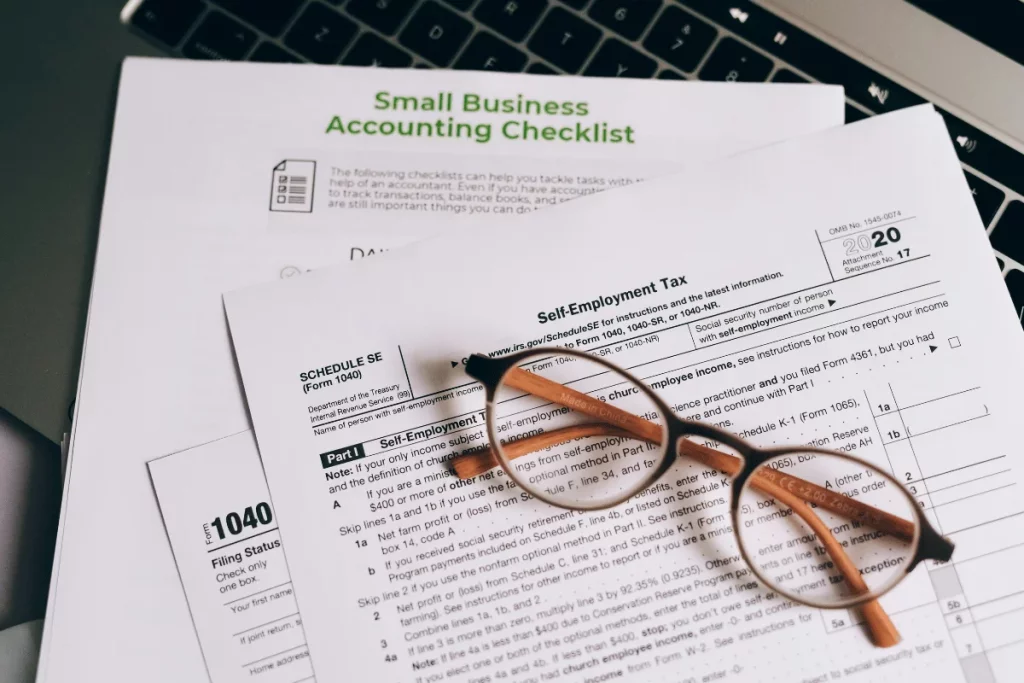When your business merges or is acquired by another, the required M&A accounting can be complicated.
This guide explores the fundamentals of accounting for your merger or acquisition to help you streamline the sell-side M&A process. From choosing the right accounting method to following the best practices - we’ve got you covered.
Since mergers and acquisitions accounting can be overwhelming, you'll want to follow various proven best practices to help you simplify the process.
Here are some critical ones to consider:
We will discuss these practices in detail later to see how they can help you simplify the accounting process.
The one key thing to note here is that since M&A accounting is complex, it's advisable to seek the help of seasoned experts.
At Exitwise, we can help you recruit and work with the best M&A accountant and other professionals to help you maximize your business exit.
Book a consultation session with our team today to achieve the optimal exit of your dreams.

M&A accounting is the complex process of recording, reporting, and analyzing M&A transactions correctly in the financial statements of the business or companies involved.
It aims to value and consolidate the merging companies' financial positions accurately.
Proper accounting helps negotiate fair deal terms and ensures proper internal and external reporting after the transaction.
Deal accounting is another name for M&A accounting. Generally, M&A transactions are referred to as deals.
These deals can either be a merger or acquisition.
In an acquisition, the acquirer buys the larger share of the voting rights in your business or becomes the new controller of your business’s operations. A merger arises when two businesses combine into a new entity.
Purchase accounting is the process an acquirer follows to record the purchase of a target business on the acquiring company's financial statements.
The process involves allocating the purchase price and recording the assets acquired, liabilities assumed, and goodwill generated for internal purposes and compliance with tax regulations.
You may refer to purchase accounting as acquisition accounting, the acquisition method, or the purchase method.
Purchase accounting applies specifically to M&A deals where the acquirer gains control over the target business.

While still a type of financial accounting, M&A accounting has some key differentiators:
Unlike financial accounting, which shows your business's economic health, M&A accounting shows you the financial values and positions of the combined companies.

The acquisition method of accounting applies to an M&A transaction in which one of the combining entities gains control over the other.
Microsoft's 2016 $26.2 billion purchase of LinkedIn is a crucial acquisition accounting example. The acquisition had several calculations:
The acquisition method helps to ensure transparency in the business valuation process with accurate market values of the assets acquired and the liabilities assumed.

Here's how the acquisition accounting method operates:
Identifying the acquiring company is critical for applying the acquisition accounting method correctly.
The acquirer is typically the entity that buys the larger share of the voting rights in your business or becomes the new controller of your business's operations.
The acquisition date marks the date on which the acquiring entity legally transfers consideration, assumes your liabilities, and acquires your assets.
The date is important in accounting because it provides a sound baseline to calculate the fair value of the assumed liabilities and the acquired assets. The goodwill created is also calculated as of this date.
The ‘consideration transferred’ in an M&A deal refers to the total fair values of the elements the acquirer transfers. Every consideration element should be identified, recognized, and measured or valued accurately as of the date of the acquisition.
Consideration elements may include:
You can use different asset valuation methods, such as cost, income, or market approaches.
These steps can be complicated. It's advisable to work with an M&A accountant to help you understand and negotiate how your assets and liabilities are identified and valued.
You’ll also need the help of other M&A experts in crucial aspects such as reviewing unsolicited offers to buy your business, qualifying potential buyers, and generally protecting your business interests.

Let's dive deeper into each M&A accounting best practice:
You'll want to identify and determine your acquirer and agree on the deal structure as early as possible to determine the applicable accounting method according to GAAP standards.
Tip: Most investors or buyers prefer the acquisition accounting method because it is more transparent about the purchase price, what assets are acquired or liabilities assumed, and at what cost.
As a seller, the accounting method is ideal for you as well because it shows how the purchase price is distributed among your assets and liabilities. You can see if the price is justified and negotiate for more if you feel otherwise.
The IFRS (International Financial Reporting Standards) and GAAP (Generally Accepted Accounting Principles) now require using the acquisition accounting method in recording and reporting M&A transactions and preparing financial statements.
The pooling method for mergers is highly discouraged and has largely fallen out of use.
Under US GAAP, the acquisition accounting method distributes the total purchase price across identifiable tangible and intangible assets acquired and the liabilities assumed.
You must allocate the price based on the fair market values of the liabilities and assets as of the acquisition date.
After every acquired asset and assumed liability is accounted for, any remaining money is recorded as goodwill.
You'll need to collaborate with the acquirer to recognize and qualitatively describe all the items that make up the goodwill, such as customer lists, brand recognition, and intellectual property.
Note that determining the goodwill is important in understanding how goodwill is taxed or is eligible for tax deductions.

Contingent consideration is an asset or liability that is valued initially and requires valuing again during various reporting periods.
Contingent considerations are usually recorded initially on the date of the acquisition.
If not assessed properly, the value of a contingent consideration may bring financial confusion or uncertainty.
In the purchase accounting method, the financial statements show the acquirer's accounting basis. The acquirer consolidates the newly acquired subsidiary's financial results with its own from the acquisition date going forward.
In the pooling method, the merging companies’ financial statements are combined as a mathematical summation to show the pooling of interests to form a new reporting entity.
Evidently, M&A accounting is complex. It's best to work with an M&A accountant and other business combination experts to streamline your accounting.
At Exitwise, we help you choose and work with experienced M&A experts who can help you understand the different aspects of your M&A accounting and even maximize your sale price. Chat with our team today to get started!

Let's end the discussion with a few common questions on M&A accounting:
The main differences between purchase accounting and pooling of interests are how assets are valued and whether goodwill is created.
Unlike purchase accounting, the pooling method doesn't account for any intangible assets like goodwill since the assets and liabilities are valued at historical costs rather than fair market value.
If you use the purchase method, you'll value intangible assets at their fair market value as of the acquisition date.
The most common approach is the discounted cash flow method, which is used to find the net present value of the assets. The fair value is then amortized over its useful life or 40 years maximum.
When you pool interests, you don't have to value intangible assets.
After the merger or acquisition, you must prepare consolidated financial statements that accurately show the financial position and performance of the resulting entity.
The FASB requires the acquirer to make your purchase accounting adjustments using the acquisition method of US GAAP within 12 months. They have to revise your assets and liabilities to fair value.
In the acquisition accounting method, acquisition costs are usually treated as expenses to the acquirer and aren't added to the purchase price.
However, depending on the deal, you may also incur some costs related to the acquisition. Such costs may include legal, post-closing, and accounting fees.
As the seller, you’ll account for these costs in your flow of funds (how financial resources move in your business). These costs reduce your sales proceeds and tax liability.
Navigating M&A accounting can be overwhelming when you want to sell your business.
An M&A accountant and other experts can help you analyze the deal, negotiate a fair structure, and comply with tax and financial regulations.
Reach out to us today at Exitwise to recruit your dream M&A team to help you structure your exit and maximize the financial benefits.
Let Exitwise introduce, hire and manage the best, industry specialized, investment bankers, M&A attorneys, tax accountants and other M&A advisors to help you maximize the sale of your business.

